|
|
Kirchseeon-intern.de - Ortsgeschichte - Einmarsch der US Armee am 1. Mai 1945 |
|
|
Einmarsch der US Armee am 1. Mai 1945Stand 11.03.2023(Anmerkung: Durch Klicken auf das jeweilige Bild wird dieses vergrößert in einem eigenen Fenster dargestellt) Der rasche Zusammenbruch der sich in Richtung der "Alpenfestung" zurückziehenden Truppenteile der Wehrmacht erlaubte den Einheiten der 7. US-Armee in Südbayern ein rasches Vordringen in Richtung Süden/Südosten. In den Bereich des Landkreises Ebersberg rückte das XV. Corps der 7. US-Armee unter Lt.-Gen. Alexander M. Patch vor: 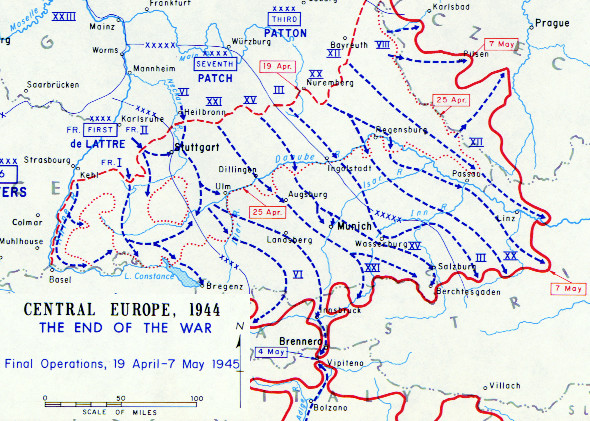 In History: XV Corps heißt es dazu: "With the 3rd Infantry Division on the right flank, the 42nd Infantry and 20th Armored Divisions in the center and the 45th Infantry Division on the left, the Corps drove south to capture Aichach, took the huge underground gasoline storage area at Unterpfaffenhofen intact, liberated the inmates held at the notorious Dachau Concentration Camp, and captured Munich by April 30th. Changing the direction of attack to the east, the Corps left the 45th Division to occupy Munich and raced to cross the Inn River and take Rosenheim and Wasserburg." Nach der Befreiung des Konzentrationslagers Dachau am 29. April 1945, an der zahlreiche Einheiten beteiligt waren, rückte die 42th "Rainbow" Infantery Division auf München vor. In 42nd "Rainbow" Infantry Division: a combat history of World War II (1946)" heißt es dazu: "After clearing Dachau of enemy resistance the Second Battalion of the 222nd Infantry pushed forward and Company E crossed the Amper River and at nightfall entered the outskirts of the city of Munich and thus became the first American unit to enter the capital of Bavaria ... On the morning of April 30 the 222nd and 242nd Infantry Regiments passed the 20th Armored Division and entered Munich. Although on the east of the city the 45th Division was meeting scattered opposition the enemy offered no resistance to the Rainbow. The 3rd Division on the right likewise met no opposition and entered the city. Which division first entered the city in force is difficult to determine... Just before leaving Munich the Second Battalion of the 242nd Infantry uncovered a large airport, about 8 miles southeast of the city. There 1,000 men and 500 women soldiers surrendered and 100 planes and three anti-aircraft batteries were captured. The next day the Division advanced 18 miles beyond the city." Die Isar wurde an mehreren Stellen nördlich und südlich und in München überschritten. Das XV und XXI Corps der 7. US-Armee rückten östlich und südlich von München vor. 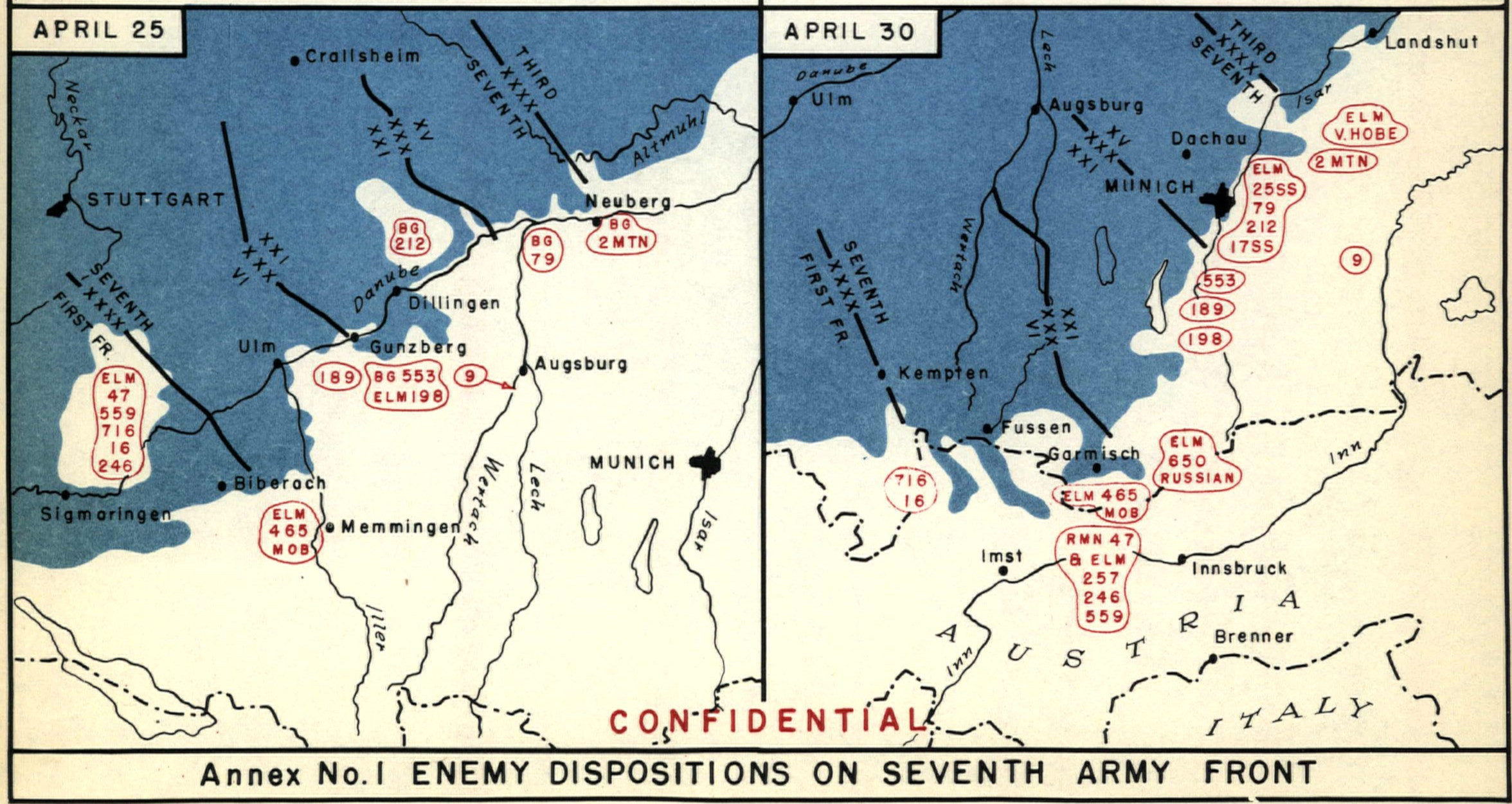 Frontverlauf und Position der amerikanischen und deutschen Truppenteile am 25. und 30. April 1945 im Raum München (Quelle: G-2 History Seventh Army Operations in Europe - Part Nine, 1 - 30 April 1945) 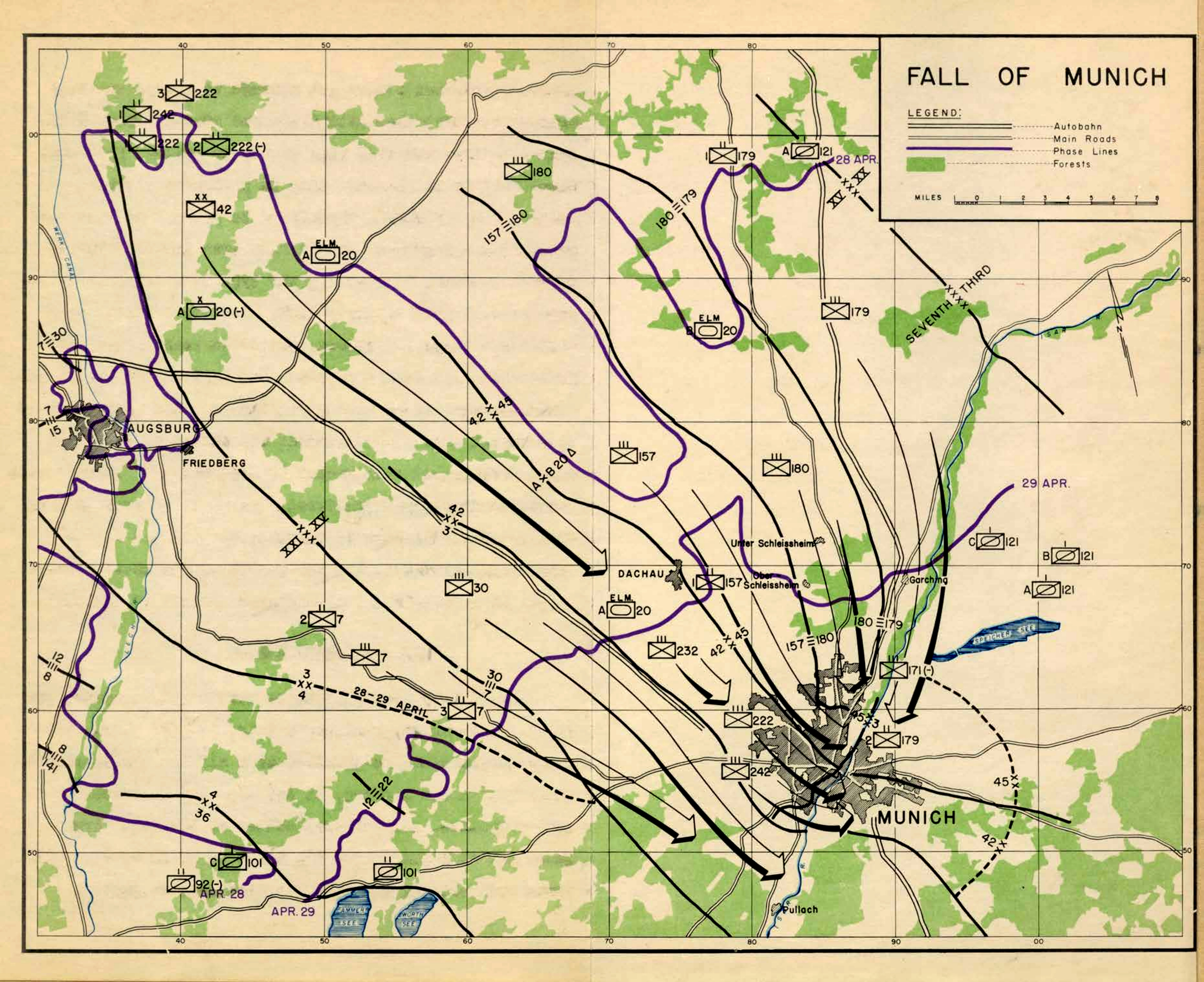 Der Marsch auf München und der Fall Münchens am 30. April 1945 (Quelle: 7th Army History - Part Two) 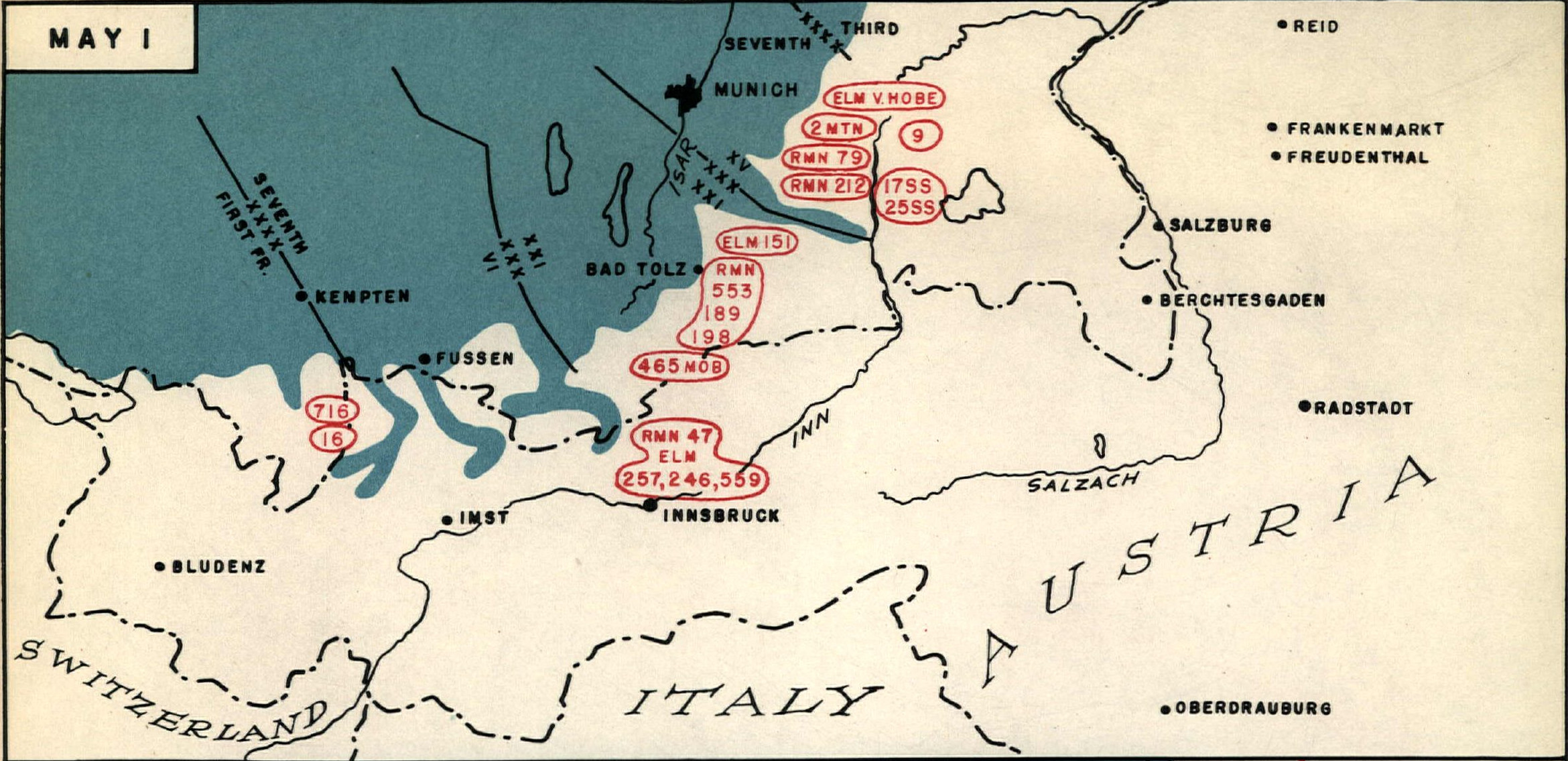 Frontverlauf und Position der amerikanischen und deutschen Truppenteile am 1. Mai 1945 (Quelle: G-2 History Seventh Army Operations in Europe - Part Ten, 1 - 31 May 1945), S. 271) 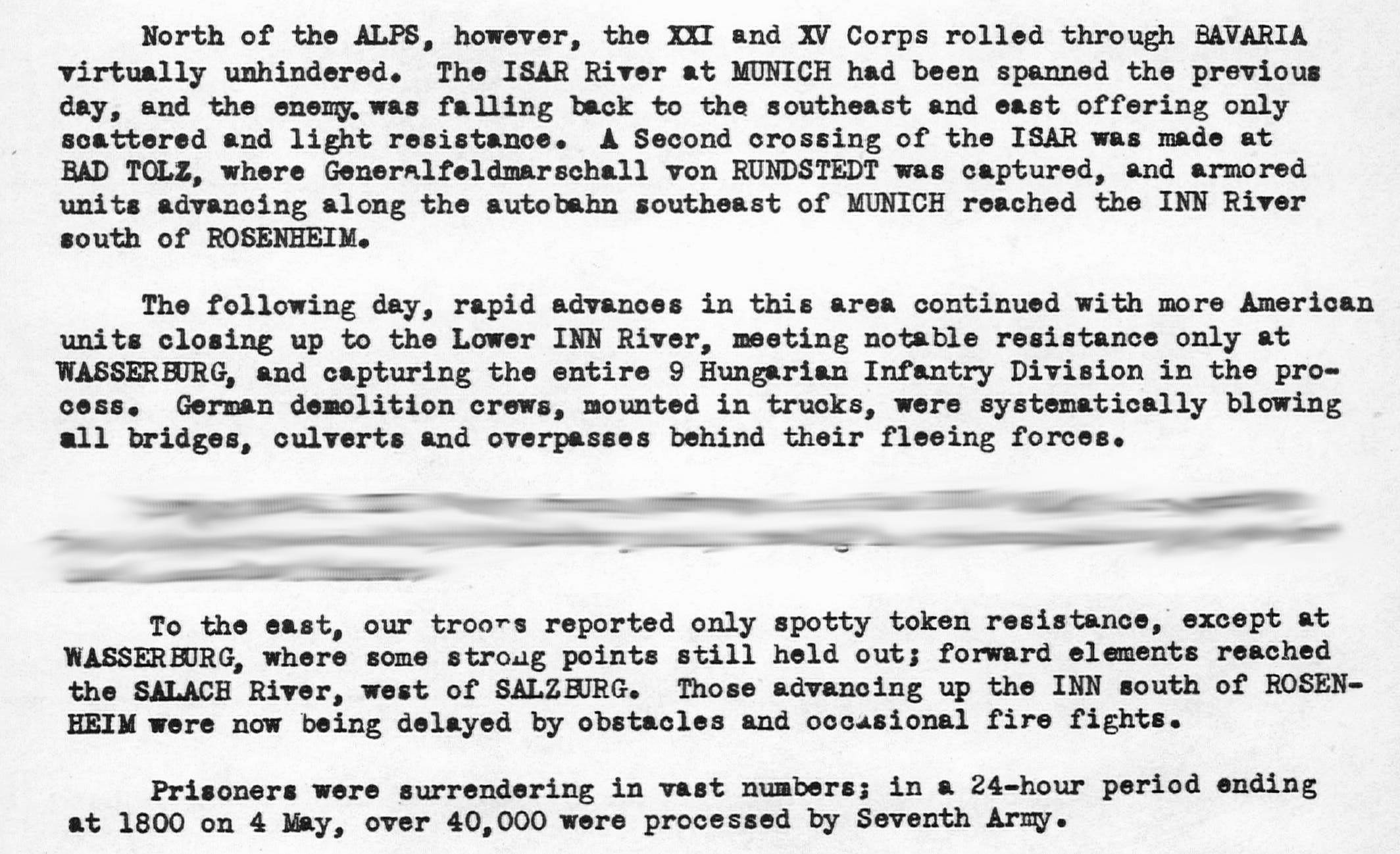 Bericht vom 1. Mai 1945 (Quelle: G-2 History Seventh Army Operations in Europe - Part Ten, 1 - 31 May 1945), S. 227) 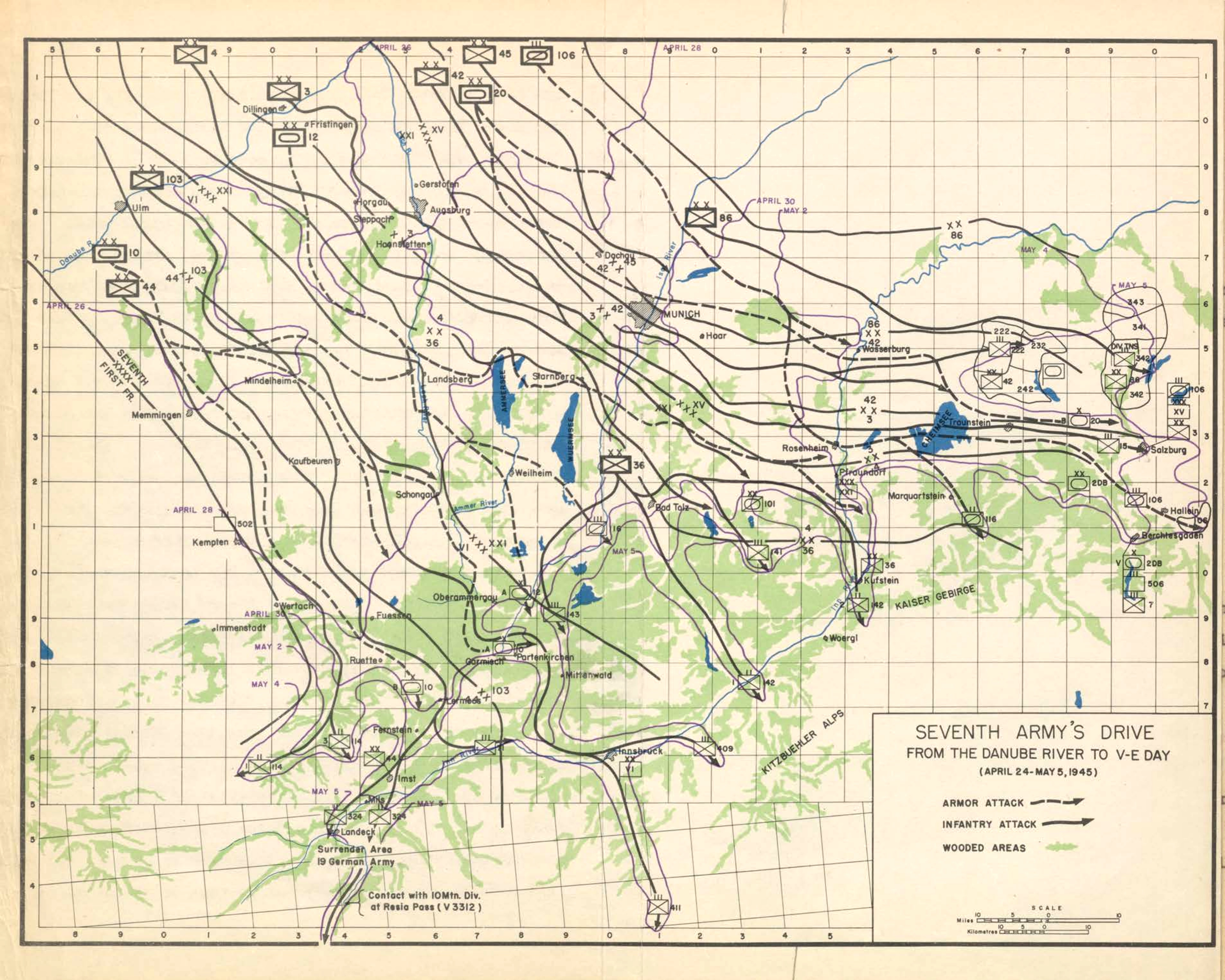 Marsch der 7. US-Armee durch Oberbayern nach Süden und Südosten, bis 5. Mai 1945; die Truppenbewegungen im Landkreis Ebersberg waren noch weit komplexer, als hier (vereinfacht) dargestellt! (Quelle: 7th Army History - Part Two) 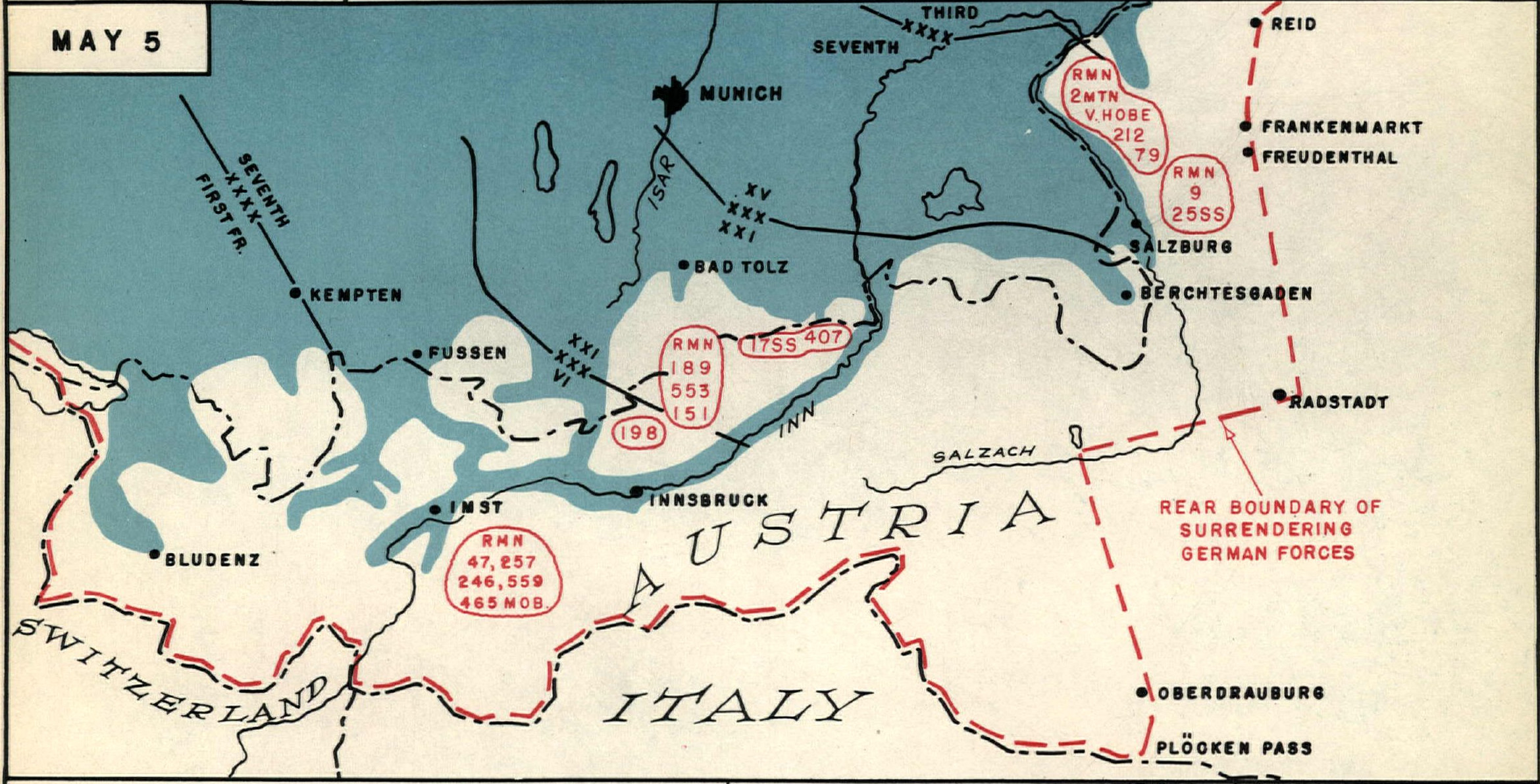 Frontverlauf und Position der amerikanischen und deutschen Truppenteile am 5. Mai 1945 (Quelle: G-2 History Seventh Army Operations in Europe - Part Ten, 1 - 31 May 1945), S. 271) 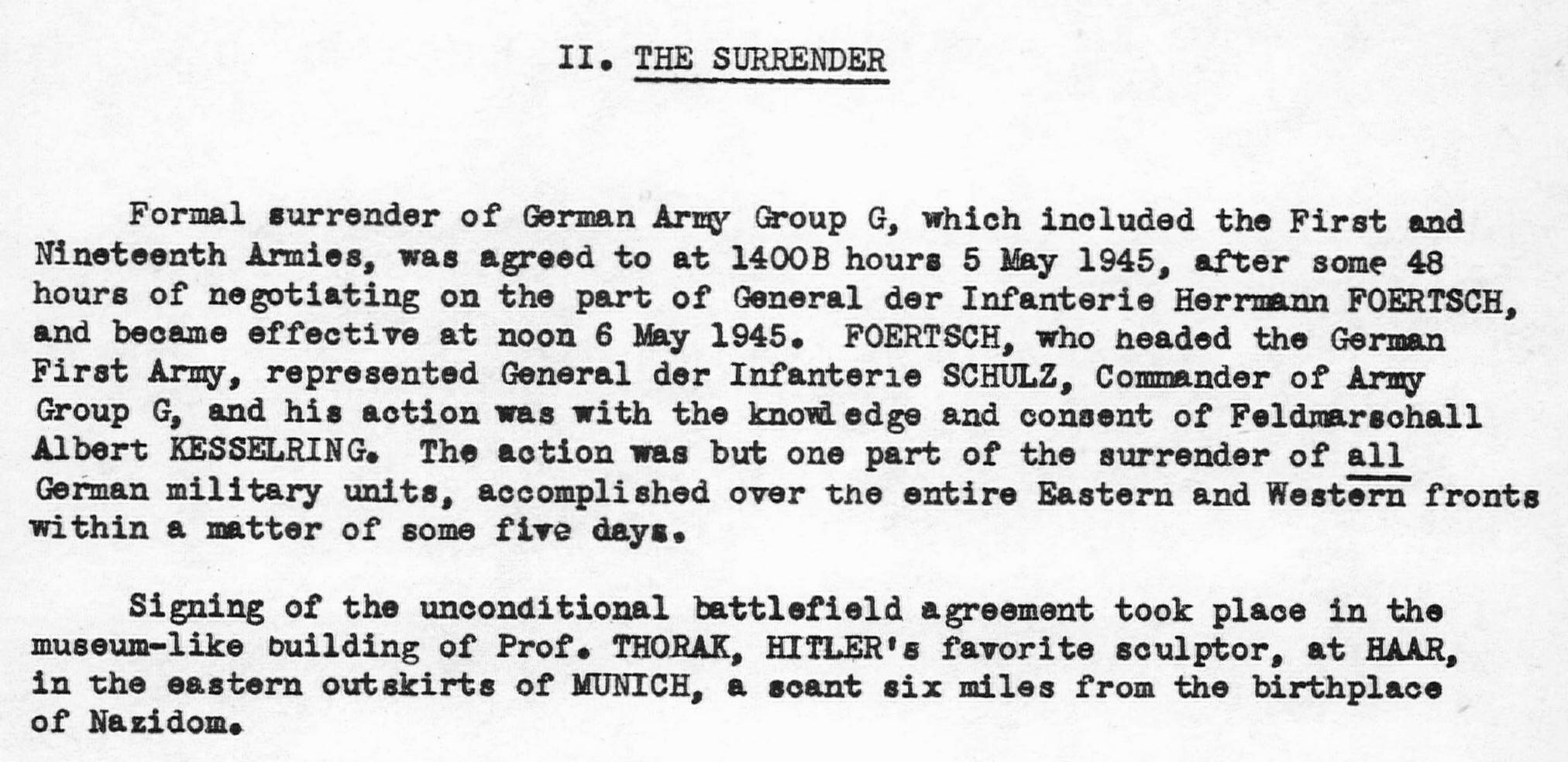 (Teil)Kapitulation der Wehrmachtgruppe G am 5. Mai 1945 durch Infanteriegeneral Foertsch, Kapitulationserklärung in den Ateliergebäuden von Thorak in Haar/Baldham, Beschreibung der Unterzeichnung der Kapitulation und Wortlaut der Kapitulationserklärung (Quelle: G-2 History Seventh Army Operations in Europe - Part Ten, 1 - 31 May 1945), S. 229)
|
|
© 2011-2023 · L. Steininger · |